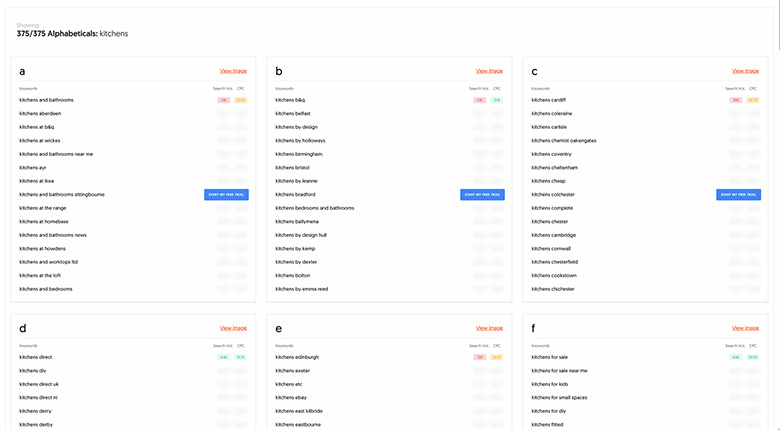Generating content can be a real pain if you’re not sure what to write about. You may find you have an initial flurry of ideas, then you realise you’ve run out of topics.
The good news is the solution is really simple and in some ways obvious. You don’t have to work your way through a complicated process – just look a bit closer to home.
So, here are several ways you can continue to generate great ideas for your content.
Understand who you are writing for
It is said quite often but a lot of time the answer is wrapped up in understanding your audience. Who are they, what do they do and why would they be interested in your company or even your opinion? The product or service you offer will give you another clue.
The best way to explain how this works in practice is to look at an example. Let’s take a kitchen company. They design and install kitchens, which means their target market is new or existing homeowners who are primarily looking for a new kitchen.
For most people, this is a large investment and works as the central hub of the house. Immediately quite a few topics come to mind:
- The importance of kitchen design
- How to set your budget
- The latest kitchen trends
- What are the time-saving gadgets
- What’s involved in fitting a new kitchen
This is all useful information that customers would be interested in exploring further. You can also incorporate industry topics such as the latest gadgets or colours. Use it as a chance to express your opinions and demonstrate your expertise.
Utilise the power of Google
Probably taken for granted these days, but we all go to Google to find the answers to our questions. This should drive what and how we write our content. So, why not use Google search to research your topics?
Sticking with ‘new kitchens’ – if you put this phrase into the search bar, several topics appear that you can take and build into a piece of content.
- Kitchen ideas and inspiration
- Traditional and contemporary kitchens
- Kitchen worktops and cabinets
- Need a new kitchen? Here’s how to get one for under £5,000!
- Quality and bespoke design
Just remember, these are ideas for content and not titles in themselves. But what this gives you is a reference point around which you can build your piece or possibly several pieces.
Listen to your customers
Some companies will go as far as to compile a questionnaire and ask customers what is important to them, thereby generating more content topics. This takes time and responses can be limited.
The reality is you probably don’t need to go as far as this. You will already be receiving feedback, even complaints, from customers. Each piece will tell you something.
You might say it’s the good, the bad and the ugly. But it will also tell you what is important to your customers.
For each complaint, you have an opportunity to build it into a piece of content that addresses the issues. Thinking again about new kitchens, the type of complaints you receive might include:
- The job took longer than planned
- Detail what is involved with fitting a new kitchen to include each of the elements, the trades involved and where issues may arise
- The wrong units were delivered or don’t fit properly
- The importance of preparation, a good kitchen design and an accurate survey
- Unhappy with the worktops
- Viewing as many samples as possible, how you can access these, mix and match them in your kitchen
This again is useful information that educates your customers and reassures them about what to expect. It also says a lot about you as a company and how you approach kitchen design and fitting.
Content generation tools
There are a couple of free tools you can use to help with content ideas. The first is Ubersuggest, an SEO tool based on a keyword search that enables you to find topics that are engaging readers.
If you type in new kitchens, the first chart that is shown is for keywords. Each of the column titles is explained so you can work out which phrases are generating engagement.

Even from this summary, you can see the most popular terms and build your content from here. The second table is for content ideas. This shows you the title page, how many visits to the page and the engagement levels on social media.

It also looks at backlinks and the number of hyperlinks coming in from other websites to this page. An indicator of the quality of the content and authority amongst your target audience.
The second tool is Answer the Public. This collects the phrases people use in an online search. When you type in a keyword you are presented with a series of article ideas. These are presented visually using three categories of questions, prepositions and comparisons.

It also shows these as a series of headings in alphabetical order.

Use these as writing prompts and develop your content from here. You’ll be surprised how many topics you discover and the areas you can explore in more depth.
There are lots of good sources for generating content ideas. Reviewing your list of topics regularly, and staying up to date on the conversations amongst your customers or within your industry, will ensure you remain relevant.



